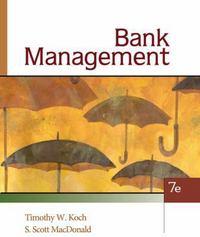Question
*Please answer all of the question* Assume an economy in which only broccoli and cauliflower are produced. In year1, 600 million kilograms of broccoli are
*Please answer all of the question*
Assume an economy in which only broccoli and cauliflower are produced. In year1, 600 million kilograms of broccoli are produced and consumed and its price is $0.60 perkilogram, while 350 million kilograms of cauliflower are produced and consumed and its price is $0.80 per kilogram. In year2, 400 million kilograms of broccoli are produced and consumed and its price is $0.65 perkilogram, while 500 million kilograms of cauliflower are produced and its price is $0.90 per kilogram.
a. Using year 1 as the baseyear, the GDP price deflator
in year 1 is (You need to find this answer), and the GDP price deflator in year 2 is (You need to find this answer)
. (Round your responses to two decimal places asneeded.)
Based on these results for the GDP pricedeflator, the rate of inflation between years 1 and 2 is (You need to find this answer)%. (Round your response to two decimal places asneeded.)
b. Using year 1 as the baseyear, the CPI in year 1 is (You need to find this answer) and the CPI in year 2 is (You need to find this answer). (Round your responses to two decimal places asneeded.)
Based on these results forCPI, the CPI rate of inflation is
(You need to find this answer)%. (Round your response to two decimal places asneeded.)
Explain any differences in your results between parts(a) and(b).
The rate of inflation calculated using the CPI is (greater than , less than, or within 0.03% of) the rate of inflation calculated using the GDP price deflator. The weight attached to the change in the price of broccoli by the CPI rate of inflation is (greater than, the same as, or less than)
the weight attached by the inflation rate calculated from GDPdeflator, since the (price of broccoli,
relative quantity of broccoli to cauliflower,
quantity of broccoli,
quantity of cauliflower,
price of cauliflower, or
relative price of broccoli to cauliflower)
in year 1 is (greater than,
equal to, or
less than)
that value in year 2. This results in the observed comparison between parts(a) and(b), since the (percentage change in the quantity,
absolute increase in the price,
percentage increase in the price, or
absolute change in the quantity)
of broccoli from year 1 to year 2 is (equal to, greater than, or less than)
the corresponding change for cauliflower.
Step by Step Solution
There are 3 Steps involved in it
Step: 1

Get Instant Access to Expert-Tailored Solutions
See step-by-step solutions with expert insights and AI powered tools for academic success
Step: 2

Step: 3

Ace Your Homework with AI
Get the answers you need in no time with our AI-driven, step-by-step assistance
Get Started


